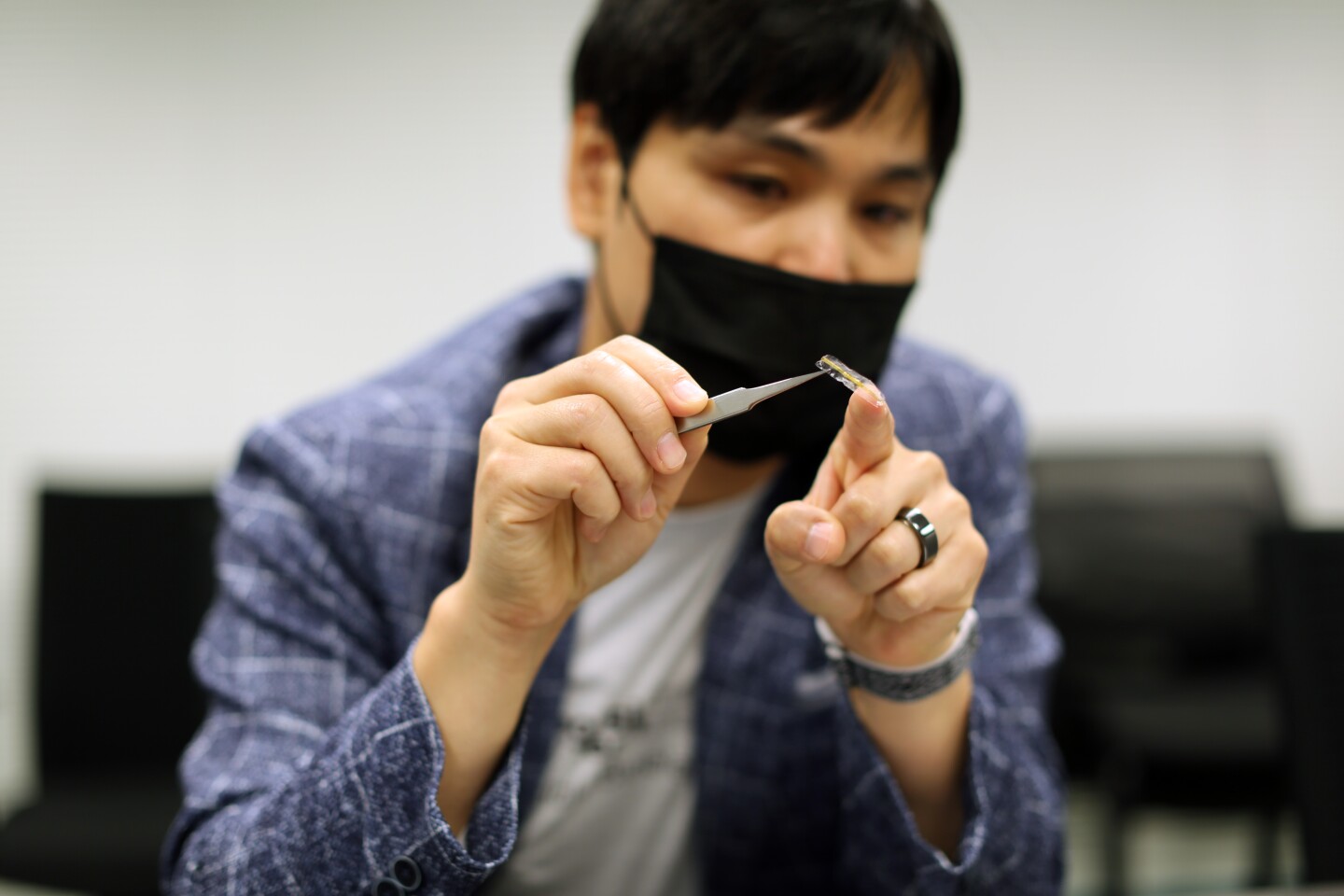Stents can make a life-saving difference for people with vascular problems, as they open up narrowing blood vessels. An experimental new one goes a step further, by actually transmitting blood flow data to an external computer or mobile device.
The implant is being developed by a team at the Georgia Institute of Technology, led by Asst. Prof. Woon-Hong Yeo.
It’s made of multiple biocompatible materials, and incorporates aerosol-jet-printed soft capacitive sensors, along with conductive loops that serve as an antenna. However, it does not contain a battery that has to be charged or replaced.
Like a regular artery stent, the device can be surgically inserted and expanded inside a compromised blood vessel, where it holds that vessel open to maintain proper blood flow.
Additionally, in a process known as inductive coupling, externally applied magnetic fields are used to wirelessly transfer energy to the stent, temporarily powering it up. Its sensors can then take blood flow readings, which are transmitted out of the body in the form of a radio signal. That signal can then be picked up and deciphered, providing real-time information about what’s going on inside the blood vessel.

Georgia Tech
“This electronic system is designed to wirelessly deliver hemodynamic data, including arterial pressure, pulse, and flow, to an external data acquisition system, and it is super small and thin, which is why we can use a catheter to deliver it, anywhere inside the body,” said Yeo. “It’s like a stent with multiple tricks up its sleeve.”
In tests conducted so far, the device was found to relay accurate data after being placed inside a rabbit’s iliac artery. It was able to transmit up to 3.5 cm (1.4 in) through blood, and 5.5 cm (2.2 in) through air. Those figures should improve as the technology is developed further.
The research is described in a paper that was recently published in the journal Science Advances.
Source: Georgia Tech
Source of Article